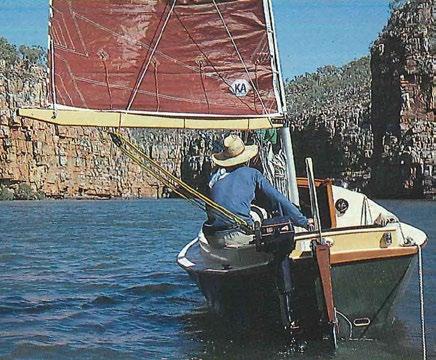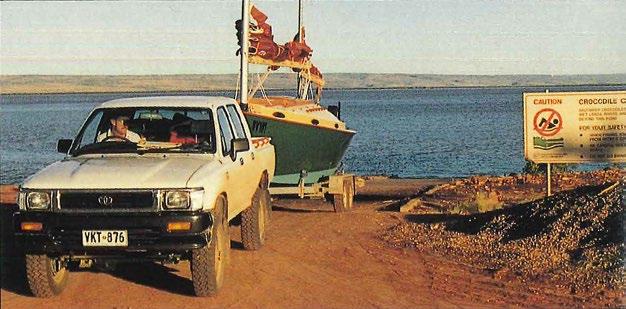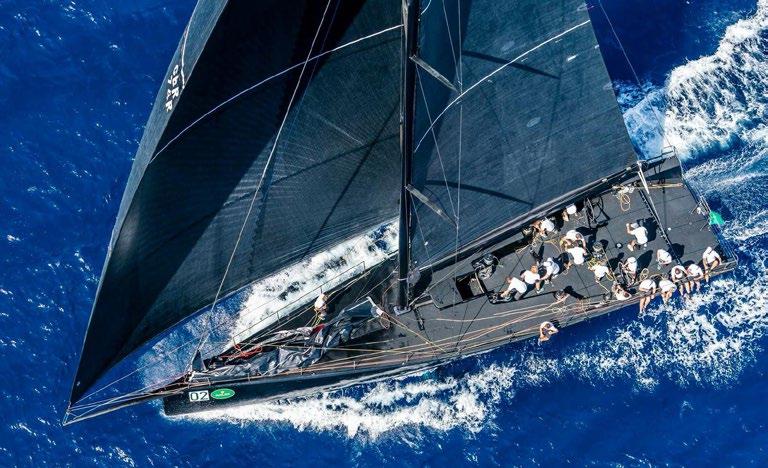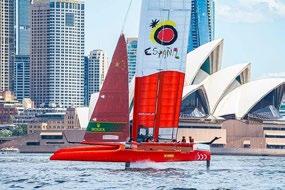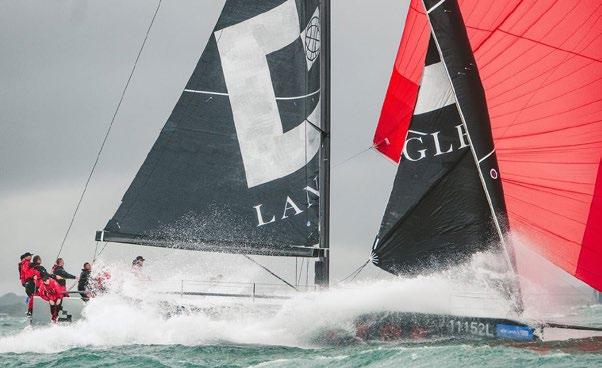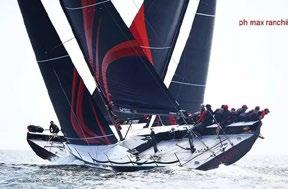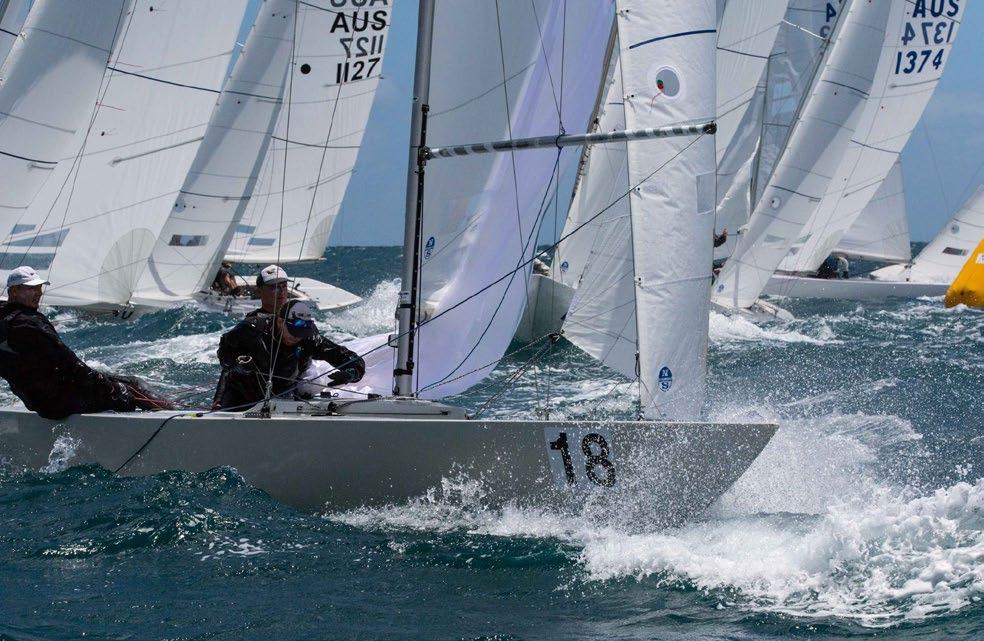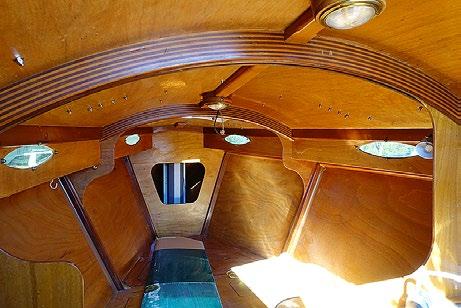
6 minute read
MATILDA
Graham Stafford MATILDA is a Norwalk Island Sharpie 23 (7m) designed by Bruce Kirby – a naval architect who also designed the Laser, the Sonar Olympic class yachts, and America Cup yachts for Canada.
irby originally designed a Norwalk Island Sharpie 26 (8m) for his own use to sail K on Chesapeake Bay, Delaware, USA.
Advertisement
There are now a range of these boats from 5.5m to 13m designs which are distributed by Robert Ayliffe via his Straydog BoatWorks, Mt. Barker,
South Australia.
The Norwalk Island Sharpie (NIS) are based on the traditional Chesapeake flat bottomed work boats for fishing in the relatively shallow Bay and also worked in the Carolinas.
They have swing centre board and lifting rudder to allow them to work the shallows if required. The design is also quite seaworthy as shown by Commodore Ralph Munroe in his extensive ocean cruises in his 28’ sharpie Egret in the late 1800’s which popularised the sharpie design for recreational boating in the USA. The technique in a storm is to raise both the centreboard and rudder with a drogue, and let the boat be taken along with breaking waves. The NIS’s will self-right up to 140˚ heel. This technique was proven by Robert Ayliffe when enduring crossing of Bass Straight in Charlie Fisher (an NIS 23) where he encountered a 60 knot gale. They sailed from Port Welshpool in Victoria to Hobart in Tasmania without any problems.
The maximum waterline beam is 2/3 the maximum deck beam which make the boat a ‘bit tippy’ initially but stiffens up once the boat heels a bit which also lets the leeward chine to cut through the waves. The boat is ketch rigged with two unstayed masts with three reefs in the mainsail and one in the
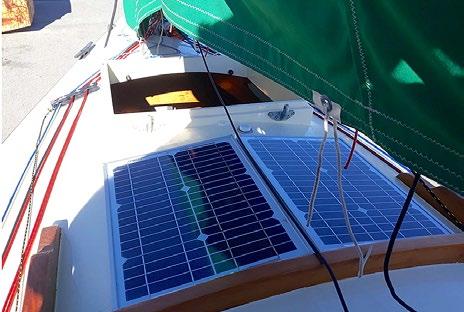
mizzen. The boat is very simple to sail. The current red sails are 30 years old and their shape shows their age however we have new one being made to suit new more flexible carbon fibre masts, again currently being made.
Matilda was built by David Nelson, a master craftsman, in Adelaide in 1991. Matilda was taken on a road trip to the Kimberley’s in 1993
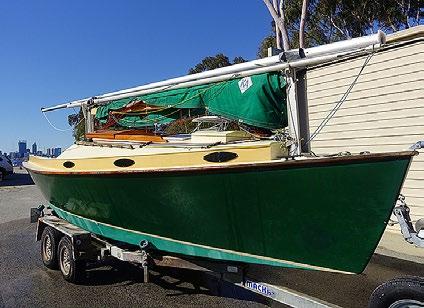
(see story on following page). The only other history of the boat I know of is it was sold into NSW and then bought by Peter Kovesi a member of Mounts Bay Yacht Club from whom I bought the boat. While built of timber it has been completely encased in fibre glass. The current masts are of tapered aluminium. The hull is emerald green and the original red sails.
My 19-year-old grandson, Alexander Bootsma, and myself are having great fun learning to sail Matilda (RF30) on Thursday afternoons and in the Frostbite Series.
Following are precis of two articles: Matilda’s cruise in the Kimberley’s via a road trip from Adelaide; and Charlie Fisher’s voyage from Port Welshpool, Victoria to Hobart, Tasmania.
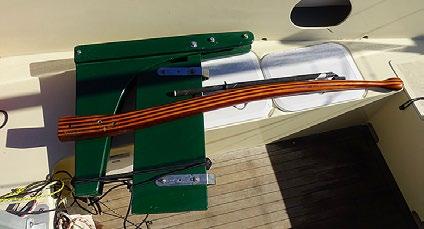
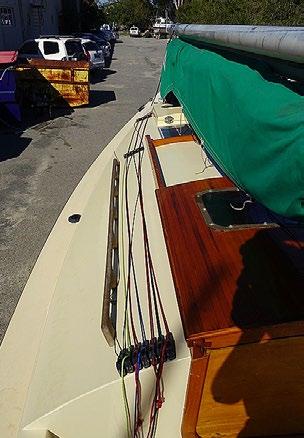
left upper: Matilda left lower: rudder box and tiller
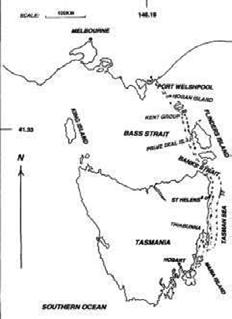
CHARLIE FISHER’S
BASS STRAIT ADVENTURE
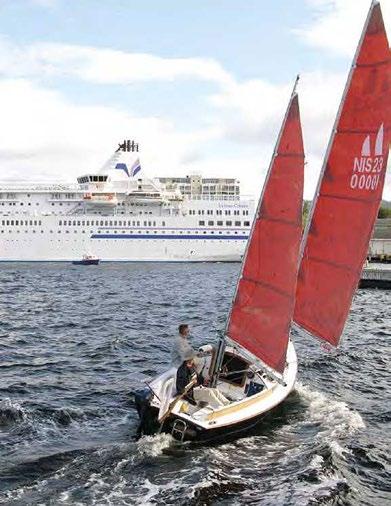
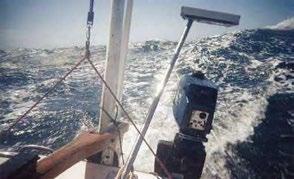
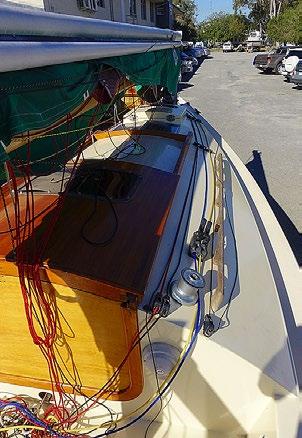
middle: reefing lines lead back to the cockpit right: winch and rope clutches for halyard and mast raising line
From the article ‘Charlie Fisher’s Bass Strait Adventure’ in Australian Amateur Boatbuilder (n.d; p19-29) by Robert Ayliffe with Ian Phillips.
The voyage completed by sister ship Charlie Fisher from Port Welshpool in Melbourne to Hobart in Tasmania and back again goes to show the versatility and grunt of the 23’ Norwalk Island Sharpies. With Matilda’s Kimberley voyage in mind, and many months of preparation, Robert Ayliffe set off on the return crossing of the Bass Strait.
He recounts the yacht being extremely competent for her size and like David Nelson, Robert encountered building seas, strong winds and immense satisfaction once the voyage was complete.
THE ULTIMATE DREAM
CRUISING THE KIMBERLEYS 1993
Adapted from the article ‘The Ultimate Dream’ published in Cruising Helmsman July 1994, pp 29-33 by David Nelson.
After years spent dreaming of building my own forty-foot cruising yacht I found myself taking a liking to Rob Ayliffe’s 23’ Norwalk Islands Sharpie that I saw at the Adelaide Boat Show in 1992. There was something very beautiful about a simple, functional, and effective design. Only a year later I had purchased materials from Duck Flat Wooden Boats and completed building my boat Matilda named by my 2 ½ year old son. The boat had to be capable to explore the shallowest bay, dry out upright between tides, was a safe and fast coastal cruiser in good weather, but more importantly a yacht I could handle single handed.
Matilda was fitted out for extended cruising with our sights set on the Kimberley dream. Julian Trudinger and I left Adelaide on a rainy winter’s morning heading north to Wyndham. We hoped to explore the upper reaches of the Berkley River. After three long days of driving through shiny gibber deserts, red sand dunes and ghost gums we arrived at our destination and spent the day at a caravan park getting organised for the trip ahead. W ith much help from the Marine and Harbour staff in Wyndham we launched, filled our tanks with good quality town water and set off from Wyndham jetty forty-five nautical miles down the Cambridge Gulf to Lacrosse Island and open ocean where we endured various narrow sections with turbulence and strong currents.
Matilda sailed on at five to six knots completely unaffected and making up ten knots over land. On our journey we visited Turtle Bay, Lacrosse Island, Revelley Island, Casuarina Creek, and Berkley River. At these locations we encountered the pink eyes of large crocodiles in the morning, ravenous seas two to three metres high, one-hundred-metrehigh orange sandstone cliffs dropping seaward, exquisite turquoise water and mangroves crackling with life.
One morning in the Casuarina Creek, we motored upstream to its end – a sandstone walled amphitheatre. The water being thirty metres was too deep to anchor, I wedged rockclimber’s camming nuts in the rockfaces and secured Matilda to the amphitheatre wall. We scrambled up the cliff face, exploring a series of serene freshwater pools along the creek bed above.
above: moored in the amphitheatre, Casuarina Creek
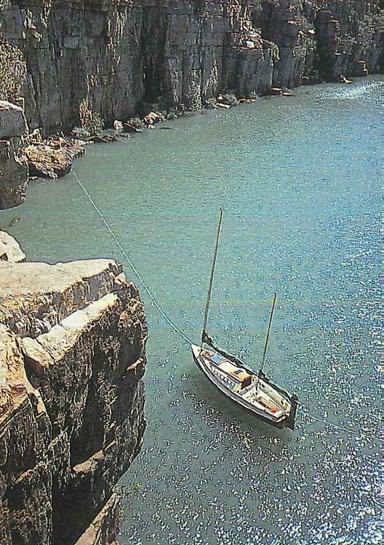
As the sun set that night, we set sail back to Wyndham. Later that afternoon we arrived and quickly sought out showers and a cold beer. Sailing my Norwalk Island Sharpie through such a pristine area has been an experience like no other, both a very satisfying and memorable challenge.
